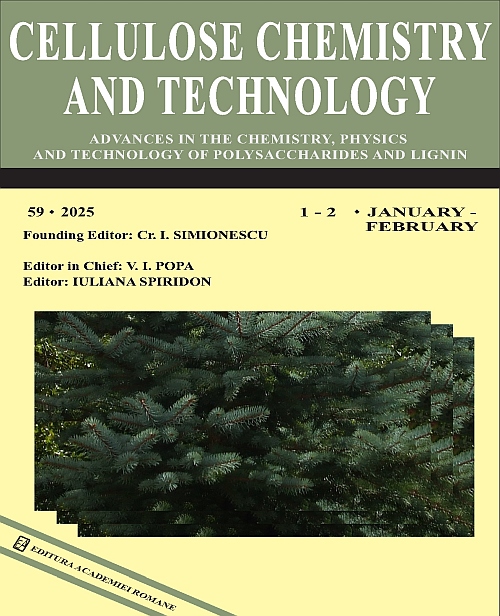|
Title
β-Cyclodextrin as carrier for different guest molecules in bioapplications – a minireview on the thermal complexation studies by differential scanning calorimetry
Authors
CRISTIAN–DRAGOȘ VARGANICI, NARCISA MARANGOCI and LILIANA ROȘU
Received
Dedicated to the memory of
Acad. Bogdan C. Simionescu (1948 – 2024)
Published
Volume 59 Issue 7-8 July-August
Keywords
β-cyclodextrin, inclusion complex, DSC, host molecule, guest molecule, solid state interactions
Abstract
The history of cyclodextrins dates back to the end of the 19th century, when in 1891, Antoine Villiers observed the
enzymatic effect of different carbohydrates, with emphasis on the butyric ferment Bacillus amylobacter (Clostridium
butyricum), on potato starch. Villiers had no idea of the impact and large number of applications his discovery would
generate over the next century. The most common cyclodextrins include six, seven and eight glucose units (αCD, βCD
and γCD) and are generally regarded as safe, especially βCD, by the Food and Drug Administration (FDA, USA). Due
to their unique structure, cyclodextrins can form inclusion complexes with a vast variety of guest molecules. The
properties of the native cyclodextrins can be improved by synthesizing derivatives, depending on the desired
application field. Nowadays, cyclodextrin derivatives are more than 11.000. From a practical standpoint, the
degradation of cyclodextrin inclusion complexes is studied by thermogravimetric analysis (TGA), however providing
information only on mass change. Differential scanning calorimetry (DSC) method reveals (changes in) other
transitions as well, evidenced in the selected representative literature examples and discussed in this minireview.
Link
https://doi.org/10.35812/CelluloseChemTechnol.2025.59.63
|



